In a tree alongside Calle Nueva I observed this Variegated Squirrel forage for food, in this case some kind of seed, nut or other fruit on this tree I cannot identify. He is almost an acrobat! 🙂
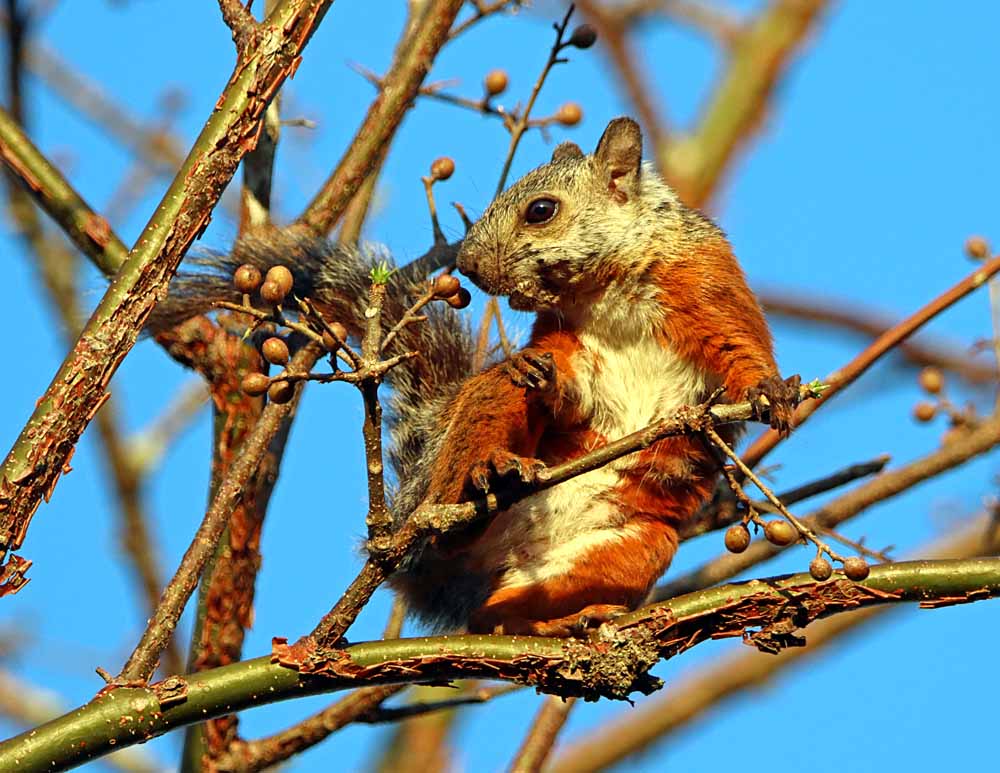
In a tree alongside Calle Nueva I observed this Variegated Squirrel forage for food, in this case some kind of seed, nut or other fruit on this tree I cannot identify. He is almost an acrobat! 🙂

And as a nature lover, I do not always embrace “progress” that henders nature, but as always, I learn to live with it! 🙂 This old dirt country road called “Calle Nueva” winds over three or four hills through the woods and farms on the western edge of Pueblo Atenas running from the western side of town to the nearby village of Rio Grande at the entrance to Ruta 27, our controlled access highway between San Jose and Jaco Beach. This narrow country dirt road has been considered an emergency exit road in case of a disaster requiring evacuation. Now it is about to become a major street or road to enter or exit Atenas. They first graded and widened it to 9 meters taking a few trees and lots of wild flower with their backhoes, graders and chainsaws. Now they have started at the Rio Grande end widening it to 14 meters and paving it! Working this way! And more than half finished! Already traffic has increased and when all is paved it will stay busy!
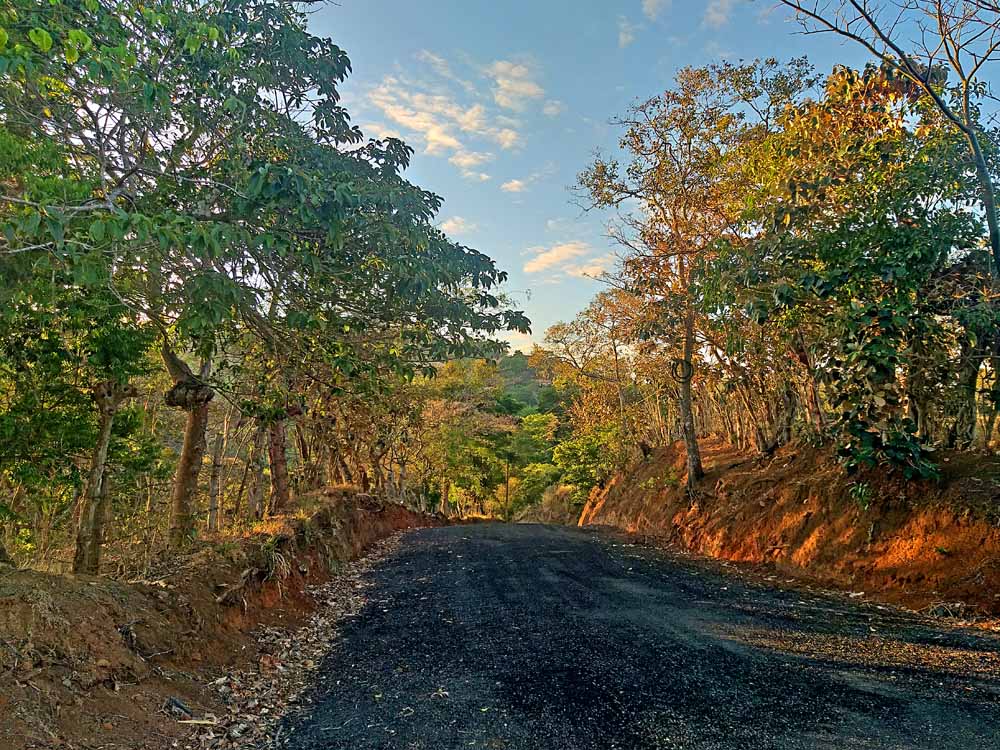
Of course I am disappointed that I am about to lose my little “shady lane” country road for birding and butterflies along with other nature photography, but even with pavement and more cars it will for a while have more birds and other nature than city streets, just gradually the farms along this road will be turned into housing developments as more foreigners move here in both retirement like me AND now so many younger adults who work on the internet and can live anywhere are choosing to live here! 🙂 It’s all part of our big changing world! At least I’m already living in one of those more desirable places in the world to live! 🙂
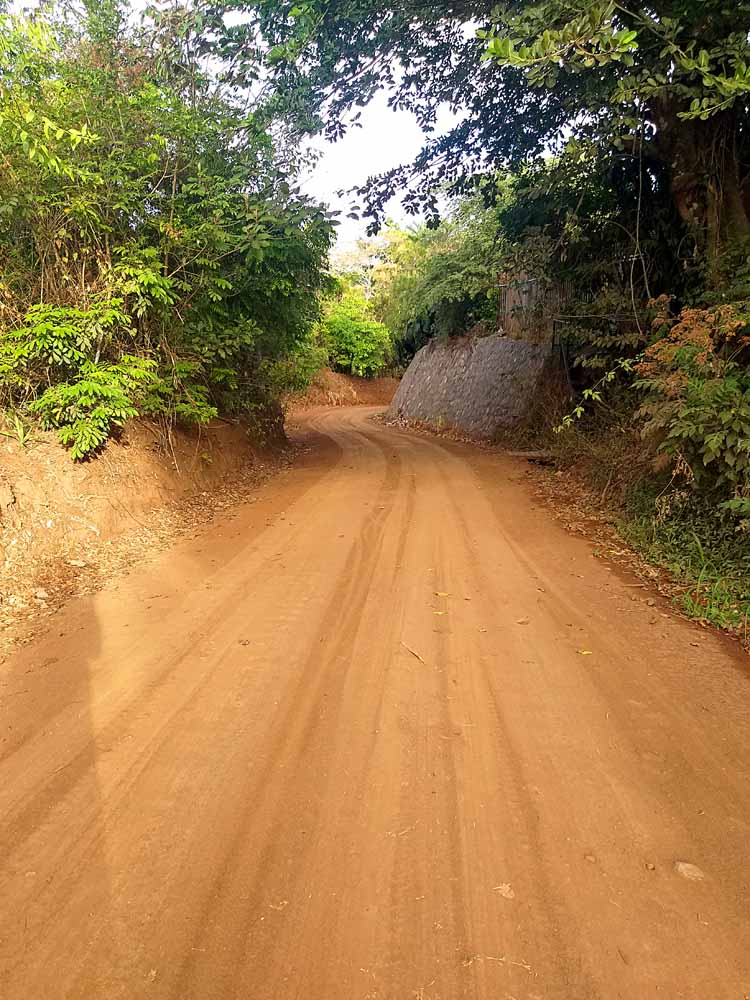
I will continue to walk this road for its nature until there is no more nature. The additional people, traffic and greater speed of vehicles will discourage the birds and other animals in time, but for now it is still a nature path, even when the pavement goes down. And I will continue to document here the birds and butterflies I find through these woods and farms, but for you who live here, be aware than “progress” is coming! 🙂
More photos of the road below from my March 10 sunrise walk . . .
Continue reading “Calle Nueva won’t be “Country” Much Longer”
7 days ago, Friday, March 10, I left my house at 5:40 am and took the city streets for the 20 minute walk to Calle Nueva alongside Roca Verde but with no entrance from our development. I saw a few birds on the city streets enroute and then a little past Colegio Técnico (our technical high school on 10th Ave.) I always start seeing birds and continue to as I cross the stream and go up the hill alongside Roca Verde. I’ll do a post about the road tomorrow and explain why I think birds have decreased there and will more in the future, but for today here’s the 11 birds I got useable photos of for the blog and darn it! I missed snapping the 2 Motmots I saw! 🙂
First a photo I consider kind of “artsy” – a black bird on black & silver power lines with the morning sunrise turning the clouds in front of him black & orange as he seems to stare at them in unbelief! 🙂 Sort of dramatic, don’t you think? 🙂
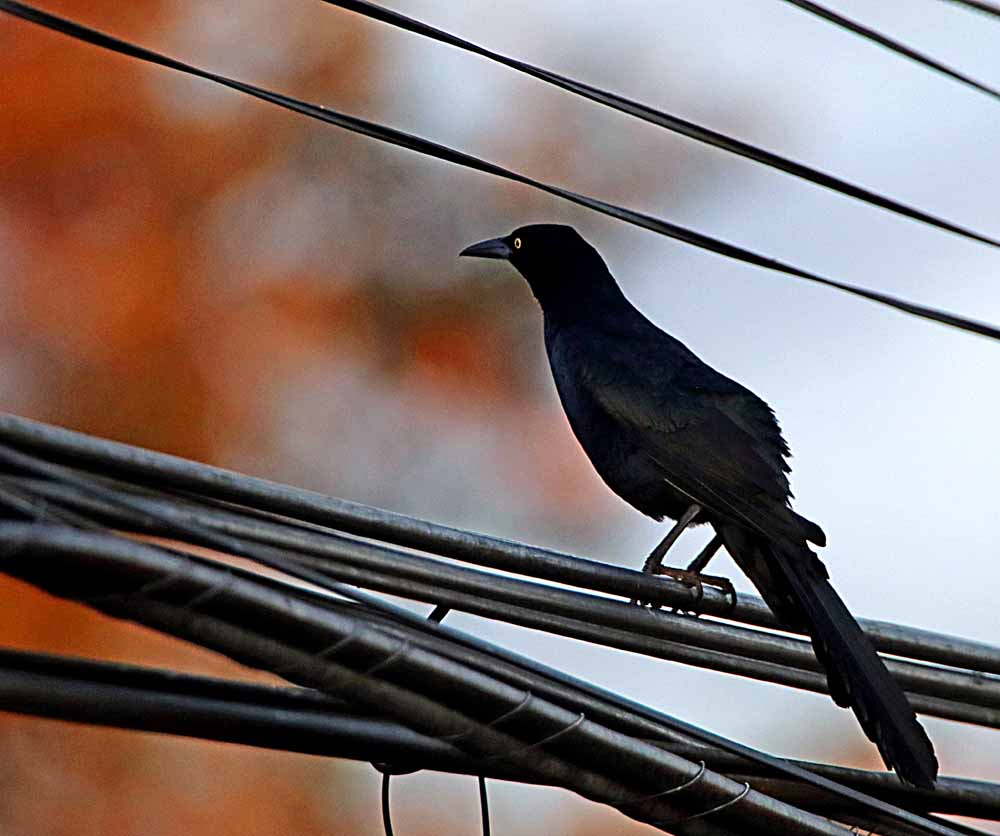
This female Summer Tanager seems to live in or near my garden, as I have been seeing her feeding and resting in my Nance Tree for months now. A regularly visiting bird seems like an old friend and I’m glad she likes the flowers, seeds, and fruit of this tree at different times of the year.
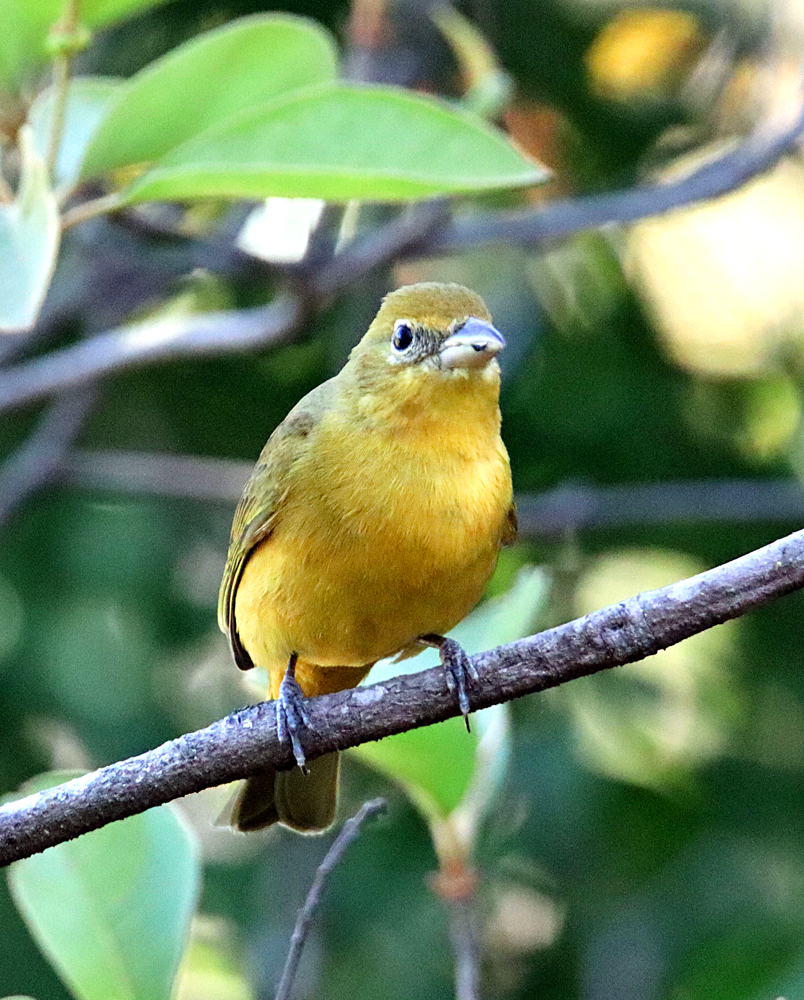
See my different Summer Tanager photos from around the year here in Atenas and from 3 other parts of Costa Rica in my Summer Tanager GALLERY. Always more females than the bright red males.
¡Pura Vida!
Blog post DATE “disclaimer” or “truth in reporting” : When writing so many posts about my Tortuguero visit in February, I gradually had several days worth ahead, up to two weeks worth, and so now the “daily sharings” from my little casita garden and walks through Atenas, Alajuela Provincia, Costa Rica are being written several days ahead of time. For example, this post was written on March 2. And if I have a down day with no post, the flow will continue! 🙂 My life of being “Retired in Costa” is almost daily recorded in my blog posts and totally collected in my Photo Gallery by subjects and trip galleries. Sharing photos of my interactions with nature is my life now as displayed in that online gallery.
THANK YOU for following my blog and your interest in my retirement life and photography! It has been a real joy now for more than eight years and there’s more to come! The website stats say I have 473 blog subscribers plus the 650 friends on Facebook that receive a link and the stats say that beyond reading the email notice and Facebook link photo, my blog website gets over 2,000 visits a month, with 28 comments and 218 “Likes” which only other WordPress bloggers can give. So blogging my retirement love of nature in Costa Rica has been very fulfilling and fun for me! And I was surprised at how many people in Costa Rica follow the blog when a large number showed up at the December JIT Art Show! That was a real joy! And that will continue this year as my only one time a year to sell photos in person.
I am not in business to sell my photos (It’s a hobby!), though they are always available in many formats through my gallery with only a dollar “markup” for me, plus in photo books in my Bookstore (also with only $1 markup), and a few novelty items in my CafePress shop (also with only $1 markup). So shop online if you like my photos! 🙂 Available for your pleasure, not my profit! 🙂
He was on the shower curtain which I whisked a bit and he fell to the bathroom floor, not moving during my shower. So I photographed him and turned out the light. The next day he was on the shower curtain again and I carried him out to the garden this time. I have a big stack of insects books but little in any of them to help identify grasshoppers other than the “Giant Grasshopper” which tourists love. So I’ve just added this one more “Unidentified Grasshopper” to the 15+ in my Grasshopper Gallery. 🙂
One website says that there are 11,000 species of grasshoppers in Costa Rica plus over 6,000 species of Katydids which are often confused with grasshoppers, so I guess a field guide would be difficult to develop and pretty thick! 🙂
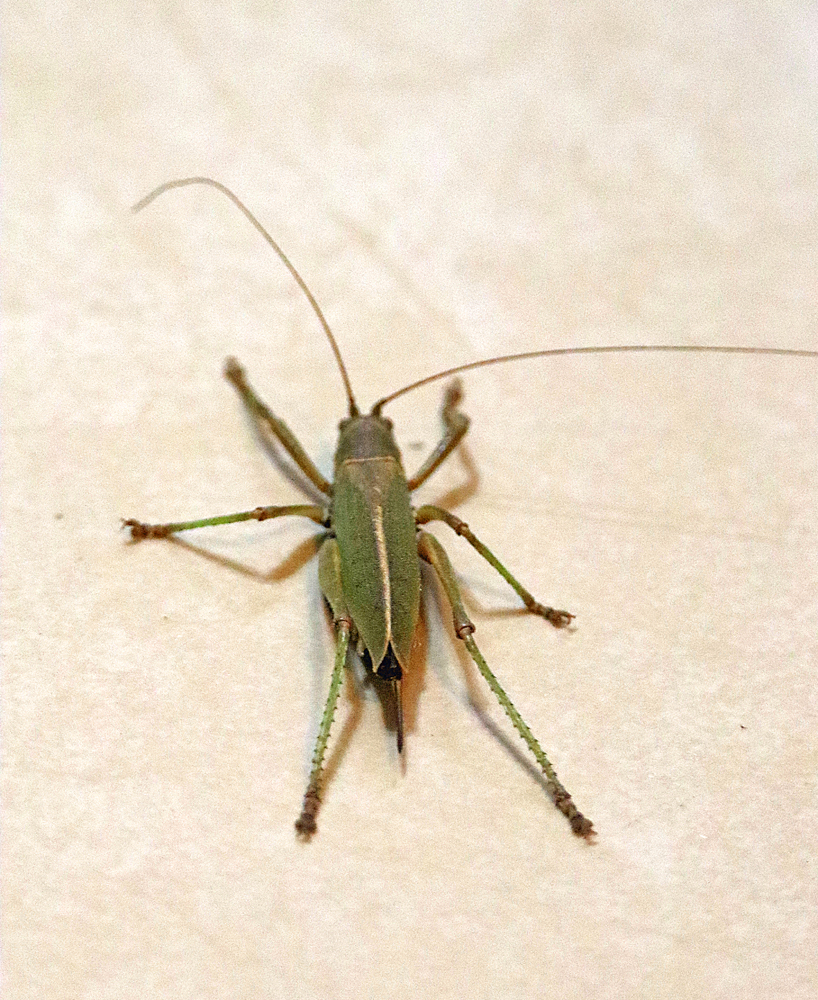
¡Pura Vida!
Tico Times Article: Costa Rica Wildlife: The Spotted Skunk
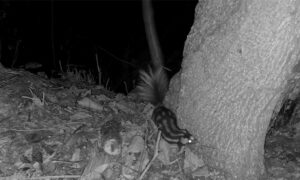
Some of the new friends that have come into my life in Costa Rica are “seasonal” or some say “Snow Birds” who come to our tropical climate as an escape from the snow & ice up north during the coldest months. One, who has in the past stayed in Roca Verde just up the street from me, is Margaret from British Columbia, Canada and like me, a birder in her 80’s.
This year she decided to go beyond Atenas and see the birds and other sights of many areas of Costa Rica and brought her friend Pat with her. Here’s the diary or journal of their very economical adventure by public bus and staying in local B&Bs, like I did in my early years here . She included 45 photos that I could not copy with the story and adding all individually to this blog post would greatly slow it down, so I chose 4 to scatter throughout the story. And her good “storyteller” way of reporting their adventures makes her words the “illustrations.” Her third person references (you and yours) are to Jill, one of their first hostesses she was writing much of this to. The sub-headings are my addition to indicate the general area of Costa Rica they were in at that time of their trip. Enjoy! And plan your own adventure! 🙂 ¡Pura vida!
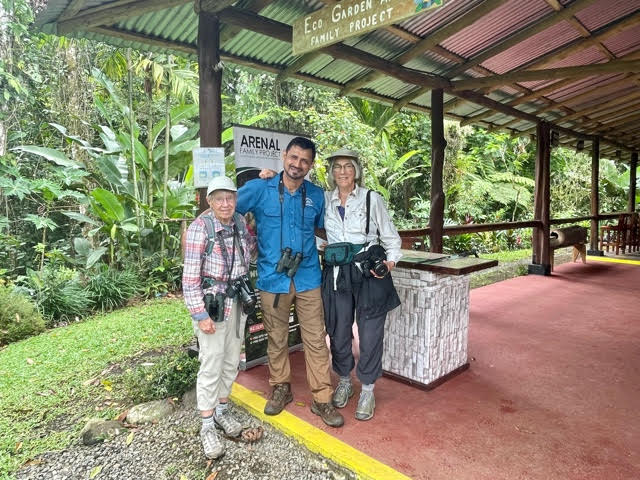
By Margaret
And of course you do know that I mean Peacock BUTTERFLY! 🙂
There are two species that I see here, the more common is the Banded Peacock that I see all over Costa Rica and shared one from last week’s visit to Xandari, but maybe my preferred is the simpler but elegant White Peacock Butterfly, Anartia jatrophae. Click that link for my gallery photos of them. They are also found all over Costa Rica, though not in the abundance of the Banded Peacock. These are the only 2 “Peacock” butterflies in Costa Rica, while Panama and south into South America there is also a Red Peacock Butterfly which is similar to the Banded but with thicker bands of red where the Banded has thinner white bands.
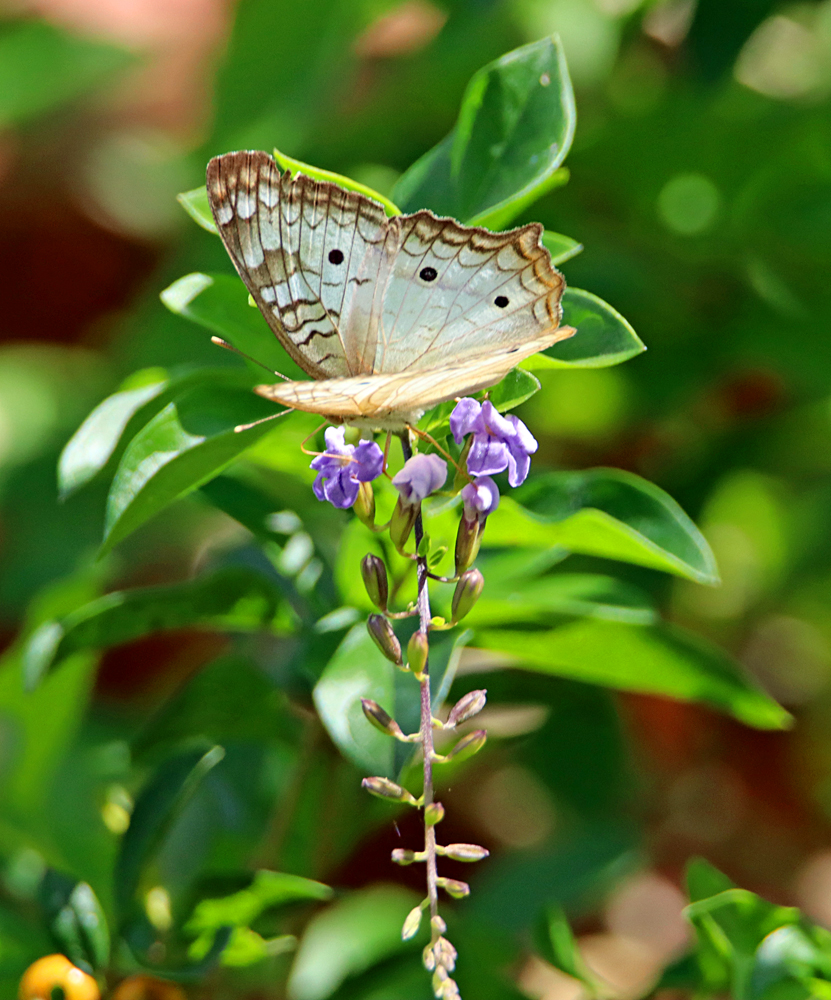
This is my second time to photograph the Mallow Scrub-Hairstreak, Strymon istapa, in my garden. The first time, back in November when one was on a Heliconia flower being attacked and eventually eaten by a Jumping Spider. See that blog post. This one was at the top of my garden along the top of the garden wall, flitting from plant to plant. A tiny, thumbnail sized butterfly in the Gossamer Wings Family, Lycaenidae. See both sets of photos in my Mallow Scrub-Hairstreak GALLERY.
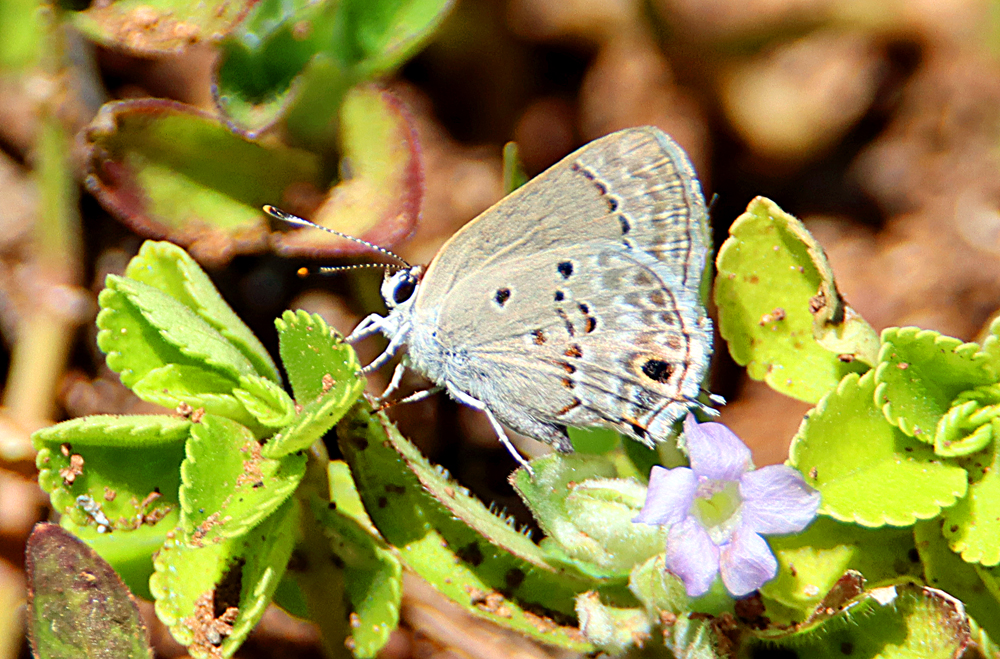
Here’s 3 more photos of this guy . . . Continue reading “Mallow Scrub-Hairstreak”
In my garden the other day as one I haven’t seen much of this year. A beautifully simple butterfly unlike his cousin the more flashy Banded Peacock. You may have noticed that I saw one on the birding hike last Saturday also. See my White Peacock GALLERY for some better photos of this normal-sized butterfly.
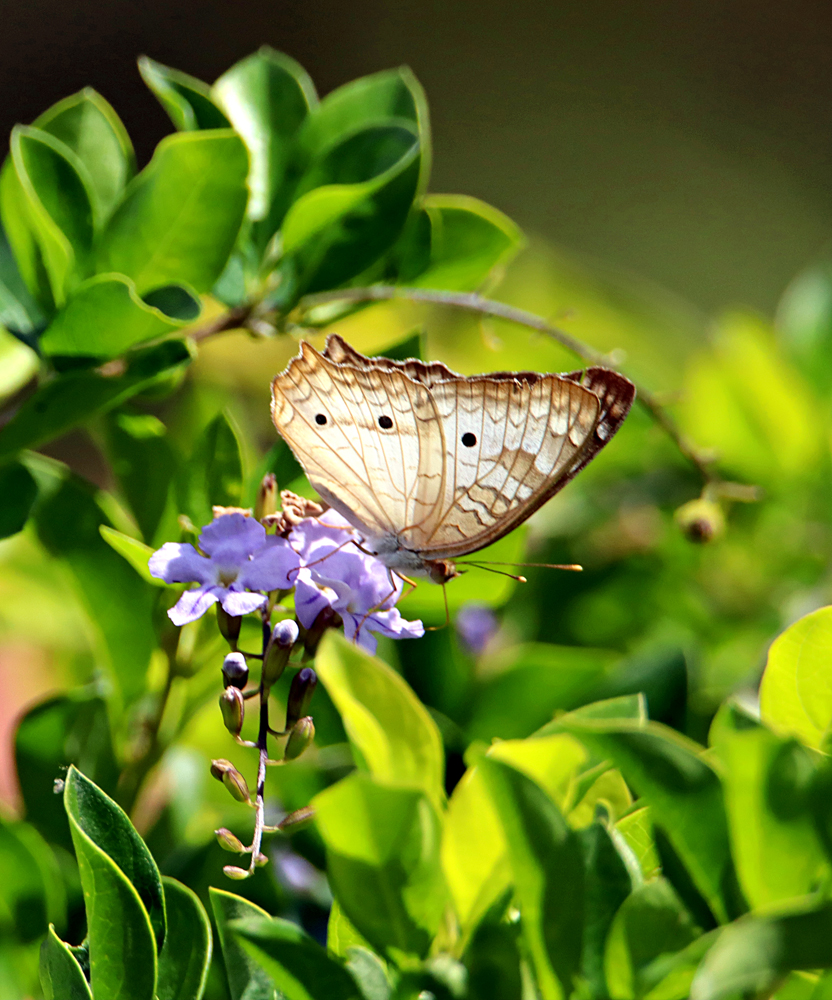

¡Pura Vida!
A local friend who has connections with a private religious retreat center in the mountains of Santa Eulalia, Atenas Canton, took me and two other friends last Saturday morning for a really nice birding hike that included all nature! 🙂 You can see the photos at:
https://charliedoggett.smugmug.com/TRIPS/2022-January-21-Sermon-on-Mount-BIRDING
Or if I did it right just click this first page of the gallery . . .
¡Pura Vida!